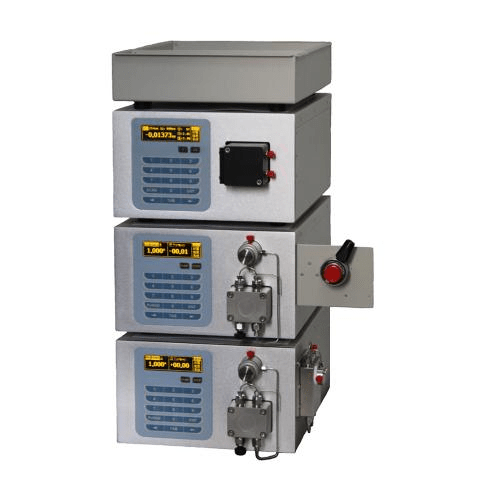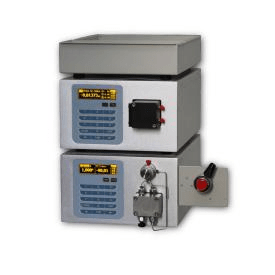High-performance liquid chromatography (HPLC) is a rapid and efficient analytical separation technique that serves as a vital tool in modern separation testing. It offers a wide range of applications and is highly adaptable to various sample types. Unlike gas chromatography, HPLC is not restricted by the volatility and thermal stability of the compounds being analyzed. It can effectively analyze and determine nearly all compounds, including those with high boiling points, polarity, ionic properties, and even macromolecular substances. In this article, we will explore the distinctive features and frequently asked questions (FAQs) about high-performance liquid chromatography.

Features of High-Performance Liquid Chromatography:
High Pressure:
HPLC operates with liquid as the mobile phase, which encounters significant resistance while passing through the chromatographic column. To ensure swift passage through the column, high pressure is applied to the carrier liquid.
High Efficiency:
HPLC excels in separation efficiency. The selection of optimal stationary and mobile phases enables achievement of separation efficiencies many times greater than those of industrial distillation columns and gas chromatography.
High Sensitivity:
HPLC, equipped with a UV detector, can detect minute quantities as low as 0.01ng, with injection volumes typically in the order of μL.
Wide Range of Applications:
Over 70% of organic compounds can be analyzed using HPLC, making it particularly useful for the separation and analysis of compounds with high boiling points, macromolecules, strong polarity, and poor thermal stability. These are the distinct advantages of HPLC.
Fast Analysis Speed and Liquid Flow Rate:
HPLC is significantly faster than traditional liquid chromatography, typically requiring 15 to 30 minutes for sample analysis. Some samples can even be completed within 5 minutes, generally taking less than an hour.
In addition to the aforementioned features, high-performance liquid chromatography HPLC offers the advantages of reusable chromatographic columns, non-destructive sample analysis, and easy sample recovery. However, it is worth noting that HPLC has a drawback known as the "extra-column effect." Any changes in the flow pattern of the mobile phase in components other than the column (such as the injector, column connector, connecting tube, detection cell, etc.) from the injection to the detector can lead to significant peak broadening and reduced column efficiency. Moreover, HPLC detectors are generally less sensitive compared to gas chromatography.

Frequently Asked Questions about High-Performance Liquid Chromatography:
Here, we address five common issues related to HPLC machines.
Eddy Diffusion:
Eddy diffusion occurs when the mobile phase encounters larger solid particles, similar to water hitting stones and creating a vortex-like flow. If the column packing is uneven or contains fine grooves, areas with faster and slower flow rates may result. Therefore, it is crucial to use small and uniform solid-phase particles for column packing to minimize eddy diffusion and maximize column efficiency.
Molecular Diffusion:
Molecular diffusion refers to the movement of material molecules from areas of high concentration to low concentration, also known as longitudinal molecular diffusion. To minimize molecular diffusion, the column should be packed with small and uniform solid-phase particles. Additionally, during operation, maintaining an appropriate flow rate is essential to prevent prolonged exposure of separated substances, which can lead to significant diffusion.
Mass Transfer:
To achieve effective separation, the substances to be separated must reach equilibrium between the mobile and stationary phases, forming a narrow zone. In liquid chromatography, solute molecules require time to partition between the two liquid phases or to adsorb and desorb on the solid phase. When the flow rate is high, the mass transfer becomes slow, causing the substances to move forward before reaching the equilibrium dynamic phase. This non-equilibrium movement widens the separation zone.
Flow Rate of the Mobile Phase:
Low flow rates can result in severe molecular diffusion, especially in gas chromatography. The theoretical plate height decreases rapidly with an increase in the flow rate until it reaches its lowest value. After that, mass transfer becomes the dominant factor, leading to an increase in the theoretical plate height. In high-performance liquid chromatography, a slightly higher flow rate has minimal impact. However, in gel filtration chromatography, where substances must penetrate the gel, mass transfer significantly affects column efficiency, necessitating a reduced flow rate.
Particle Size of the Stationary Phase:
Smaller stationary phase particles contribute to higher column efficiency, but they also increase resistance to the flow of the mobile phase, requiring increased pressure to maintain adequate flow.

